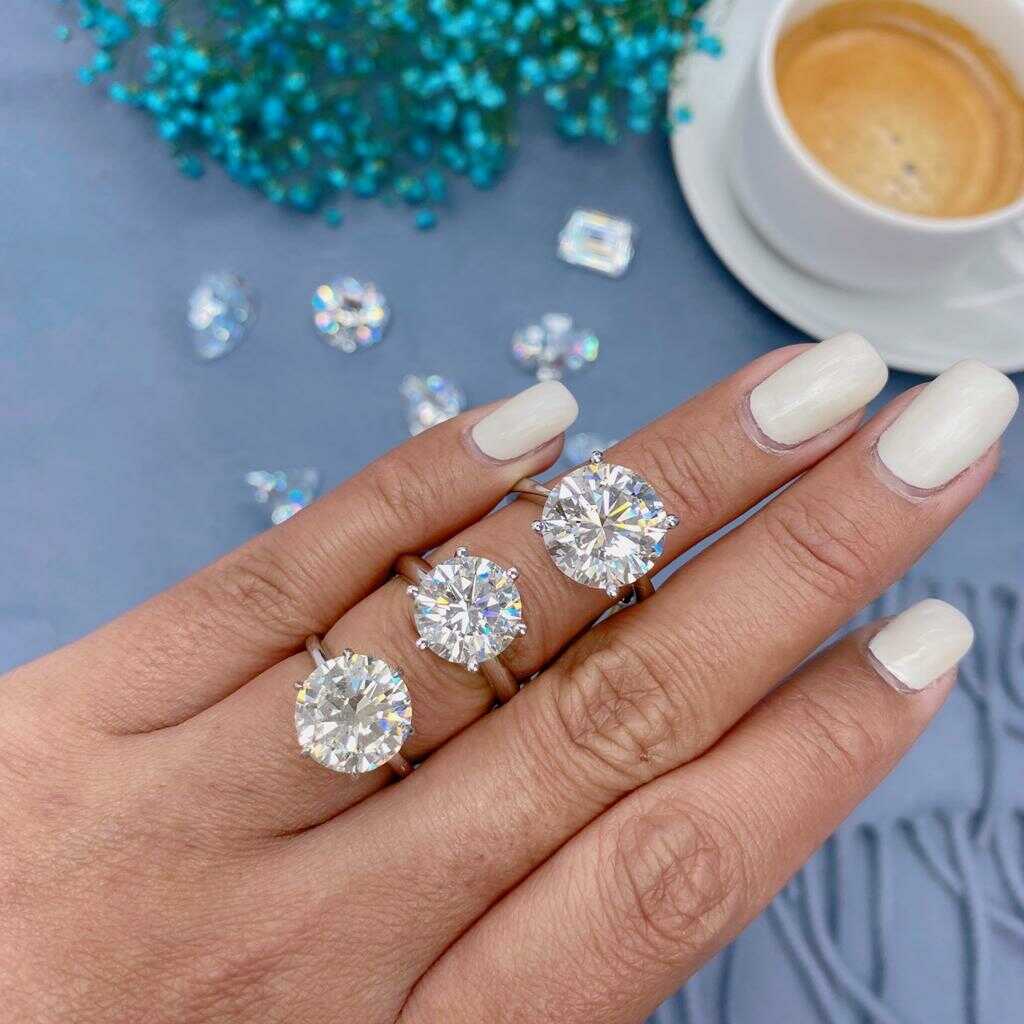When it comes to selecting a diamond, precision is paramount. Each facet, every angle, and the overall craftsmanship contribute to the brilliance of the final piece. The round cut is an enduring classic among the myriad of diamond cuts available. This guide will delve into the intricate details of selecting the ideal round cut diamond, exploring the factors that elevate it to a pinnacle of perfection.
Understanding the Round Cut
The round-cut diamond, with its 58 or 57 facets, is renowned for its ability to reflect light brilliantly, depending on whether there is a culet. The symmetry of this cut is crucial, as it directly influences the diamond's fire and scintillation. The facets must align precisely to achieve optimal light dispersion, creating that mesmerising sparkle.
The Four Cs: Carat, Cut, Color, and Clarity
Carat Weight: While carat weight is a significant factor, balancing size and quality is essential. A larger diamond may catch the eye, but a well-cut, smaller diamond can outshine its brilliance. Precision in cutting ensures that the diamond maximises its visual impact.
Cut Quality: The cut of a round diamond is perhaps the most critical factor affecting its beauty. Precision here is non-negotiable. A well-cut round diamond reflects light internally, creating a play of colours and enhancing its overall allure. Opt for a cut graded as 'Excellent' for unparalleled brilliance.
Colour Grading: Despite its brilliance, the colour of a round-cut diamond is vital. The colour scale ranges from D (colourless) to Z (light yellow or brown). Precision in selecting the right colour depends on personal preference and budget. However, a G or H colour grade often presents an excellent balance of purity and value.
Clarity: The clarity of a diamond refers to the presence of internal and external flaws. A precision-cut round diamond can mask certain imperfections, making a slightly lower clarity grade acceptable without compromising beauty. Aim for a clarity grade that is 'eye-clean' for the best visual appeal.
Symmetry and Precision in Faceting
Achieving the perfect round cut goes beyond the standard Four Cs. Symmetry, a vital aspect of precision, ensures that each facet is aligned correctly, contributing to the diamond's overall harmony. Deviations from optimal symmetry can lead to light leakage, diminishing the stone's brilliance.
When examining a round-cut precious stone, pay close attention to the alignment of its facets. The table, crown, girdle, pavilion, and culet should seamlessly interact to create a symphony of light. A precisely cut round diamond will exhibit a balanced brightness, fire, and scintillation distribution.
Choosing the Ideal Setting
Precision extends beyond the diamond itself to the setting it occupies. The setting should complement the round cut, showcasing its brilliance while providing security. Prong settings, especially with six or eight prongs, are popular choices as they allow more light to reach the diamond, enhancing its sparkle.
On the other hand, bezel settings offer a sleek and modern aesthetic while providing added protection to the diamond. The choice of metal for the setting, whether platinum, white gold, or rose gold, should be made with precision, considering the diamond's colour and personal style.
In conclusion, selecting the ideal round cut diamond requires a discerning eye for precision. From the Four Cs to the nuances of symmetry and faceting, every detail plays a crucial role in determining the diamond's brilliance. As you embark on this journey, remember that precision is not just a technical aspect; it is the hallmark of a truly exquisite and timeless piece of jewellery. In a world where choices abound, choosing a diamond with a round cut reflects a commitment to enduring elegance and an appreciation for the precision that transforms a stone into a masterpiece.







